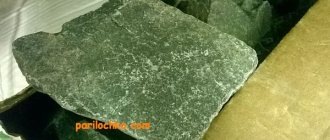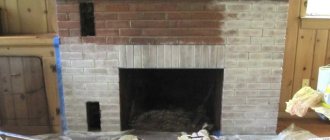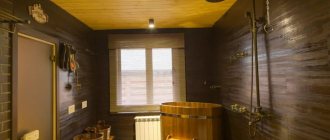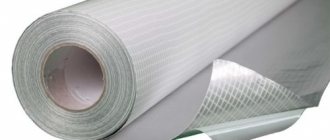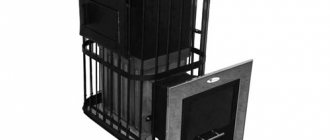Few people realize how important a component such a simple thing as ordinary bath stones is. After all, they ensure the enrichment of the air with useful micro- and macroelements, contribute to long-term heat retention and the formation of therapeutic steam. The unique healing properties of the bath are a consequence not only of a well-chosen stove, but also of the stones that serve as a guarantee of the necessary steam.
At the same time, you can find a lot of creepy stories about stones that are torn into pieces while you are in the steam room. Or how stones, evaporating harmful substances, cause serious harm to health. Such stories were not written in vain, since the correct choice of stone for a bath depends not only on how long they will last and how high-quality steam they will provide. But also whether the chosen bath stone will harm your health or the health of your loved ones.
Which stones are best for a bath - we’ll talk about this, answering the following questions:
- Is it possible to collect stones from the nearest river or is it worth spending money on buying them?
- What types of stones are there and what should a bathhouse attendant know about them?
- How are the type of stones and the type of sauna stove related?
Fig 1. Stones in a sauna stove
How to properly place stones in a sauna stove
What function does the stone perform in a bathhouse? Most people see it as a steam generator , and secondarily as a heat accumulator . But these are things that are directly related to each other: vaporization occurs at a certain temperature, which it still must have time to reach before starting the procedures.
It is logical to assume that the heating rate of the stone will depend on
the method of placing it in the sauna stove , but the design of the stove itself also plays a role here. There are convection ovens - they were purposefully created in order to reduce the amount of fuel and time to heat the room. As a result, we get a short heating, after which the bathhouse is ready, but the stones are not yet. No matter how you lay them, they simply do not have time to heat up in a short time, so they will give off weak steam. That is why economical convection ovens are much more often used in saunas rather than Russian baths.
If you heat an ordinary, for example, brick oven for a long time, then everything will heat up evenly - both the air and the heater. At the same time, the return will also be long, because the heater begins to “work” after the stove is no longer heated. Our task is to use some tricks in order to achieve the least amount of time in the standard situation of heating a Russian bath to bring the heater to the desired state.
Stone has two important characteristics: heat capacity and thermal conductivity . And if we want to speed up their heating at least a little, then it is better to place those with higher thermal conductivity and lower heat capacity closer to the fire. This way the heat will be transferred faster to those that lie higher, right up to the very top.
See the heat capacity table and other details in the article Which stones to choose for a bath. You can also read about individual rocks and their use in the bath: jade, gabbro-diabase, soapstone, white quartz and crimson quartzite.
It is easy to fulfill this condition if you use layers of different rocks. Because there is another rule that practically cancels the first one:
IMPORTANT! Stones of different fractions are placed in the heater: from the largest, laid at the very bottom, to the smallest (within the selected range), which is placed as the top layer.
Judge for yourself: the larger the stone, the more heat is needed to heat it up. However, the smallest ones are also not easy to heat - they have a smaller contact surface necessary for heat transfer. All this can be solved only by the correct choice of fraction sizes, which will be discussed below.
So, you have selected the largest specimens in the batch and are going to put them on the bottom. How to do this correctly, given that their shape is arbitrary, often elongated to one side.
IMPORTANT! Oblong stones cannot be placed flat; it is better to place them on their butt, that is, with the end (narrower side) down.
This rule is empirical, but it may also be due to the greater speed of thermal energy propagation along the layers rather than across them. Another reason for this choice is the need for free passage of hot air between the stones. End masonry increases the number of gaps between the stones.
After laying the first row, lay the next fraction as the next row. It's still not worth putting it tightly. Indeed, in addition to the fact that we must ensure air circulation, we also need to leave some space for the future thermal expansion of the stones. It is, of course, different for different breeds, but it happens in all cases. The stone increases in size, and dense packing leads to compression forces that destroy the stone.
IMPORTANT! If you place the filler close to the wall of the oven, then it may also suffer from thermal expansion. Therefore, leave a small gap between the stone and the wall.
So, the space between the stones serves to distribute heated air and prevents them from mutually compressing during expansion. This way we speed up heating and extend the life of the stone and stove.
Now let's move on to the types of heaters. They are open and closed . In the first case, the stone comes to the surface, in the second, it is hidden in a bunker equipped with a door that remains closed the entire time the stove is operating.
It is clear that in a closed heater you simply fill the entire volume, but how high should you place the stone in an open heater?
IMPORTANT! In an open heater, it is better to abandon the beautiful slide, because the top stones will not heat up sufficiently. It is correct to limit the height to the side of the heater.
There are also two options for contact with fire: either the stone is separated by a solid partition or a lattice partition. In the first case, you can pour water while the stove is running, in the second case - only after heating has stopped.
IMPORTANT! Those who are going to put stone in a sauna stove need to take into account the impact of open fire and place rocks at the very bottom that will not quickly collapse from high temperature.
For example, it’s simply a shame to place jadeite right next to the fire, because the stone is expensive, and such an arrangement will quickly fail and crumble. We have already written about the need to buy dunite, peridotite, and porphyrite in this case, which are more suitable for such things.
By the way, there is another important reason for the bottom layer to be freely ventilated in heaters where the fire comes into contact with the stones: if the gaps are too small, then pretty soon they will shrink even more from soot and soot - they will coke. By increasing the space, we will protect the stove from accidents.
Special mention should be made of placing stones in an electric heater. In order not to mislead you with a too short answer, we decided to devote an entire article to this issue with illustrations and videos.
Video
The video is boring, but it has useful information, so it's worth watching.
How many stones are needed for a bath
There are several ways to calculate how many stones are needed for a heater in a sauna.
- Firstly , you can rely on the stove's passport data if it is purchased.
- Secondly , you can proceed from the volume of the steam room and multiply the number of cubic meters by the recommended number of stones. But there is one catch: different sources give different figures - from 35 to 62 kilograms.
In most cases, it is necessary to proceed from the volume of the container for the stone . If it is known (and calculating it is usually not a problem), then all that remains is to look in a reference book or on the Internet for the density of the rock that you are going to put in and multiply by the total volume.
As a result, you get weight, but this is a maximum figure that does not say anything about the real gaps between the stones. You can use it as a guide, for example, when buying stones - buy with a small margin. Moreover, the reserve will still be useful - anyway, in six months or a year you will go through it, some will have to be replaced .
Design of a homemade boiler for a steam room
Drawing of a homemade boiler for a bathhouse
Sauna stoves operate under different conditions than wood heating boilers, hence the differences in design:
- Any homemade boiler for a bathhouse does not have a water jacket; the walls of the firebox give off heat directly to the air in the room.
- The firebox body is made of steel, since it is unrealistic to make cast iron at home.
- There are no internal channels for flue gases, and the chimney has a minimum number of turns, since the temperature of the gases at the outlet is high. The result is that the metal burns out at the point of rotation or connection.
- The loading door is located in the outflow channel. The combustion chamber is located in the steam room, and it needs to be loaded with firewood from the dressing room, so a channel is made to pass through the wall.
As a rule, homemade sauna boilers are made in two types: cylindrical and rectangular. The design of the former is more accessible in terms of materials and is easier to manufacture. The manufacture of a rectangular stove will require more financial and labor costs, but such boilers work better and are more popular.
Is it possible to mix stones for a bath?
The answer to this question is definitely positive. You can mix. Moreover, you are free to lay them out in layers or mix different ones within one layer.
Many of those who have an open fire in the stove or are not able to fill the entire volume with expensive rocks use cheaper ones for the lower layers . Or they do the same for other reasons, for example, as mentioned at the beginning, to speed up heating due to the different thermal conductivity and heat capacity of the rocks. The third reason is purely aesthetic . You can choose colors so that they look beautiful when wet. For example, by mixing green and red specimens. Or red and gray.
Read more about the properties of wood stove stones
In addition to the comparative table, we have prepared a description of the properties of the stones. Please note that we have placed the less expensive stones first, and the most elite options at the end.
Gabbro-diabase - a mineral for a budget bath
Figure 4. Gabbro-diabase bath stones
Visually similar to dark marble. It would be difficult to find a more ideal option for a budget bath: sufficient heat resistance, resistant to sudden temperature changes, heats up evenly and retains heat for a long time.
Promotes relaxation, maintaining the healing properties of the bath.
Raspberry quartzite - unusual shade and durability
Fig 5. Bath stones, crimson quartzite
A mineral with a beautiful purple color. Has increased thermal and mechanical resistance. And due to increased thermal conductivity, the stone quickly achieves the required heating.
Helps improve blood circulation and stabilize blood pressure.
Soapstone - takes a long time to heat up, but also takes a long time to cool down
Fig 6. Stones for bath soapstone
After a good heating of the stove, this stone will retain heat in the heater for almost a day. This mineral is often used for lining sauna stoves so that they retain heat longer.
Recommended for people with chronic diseases and weak immunity.
White quartz - stylish, beautiful and useful
Fig 7. Bath stones white quartz
A translucent white mineral that will look attractive in any oven. It produces a lot of steam and is characterized by unique healing properties.
Heated quartz releases atomic oxygen, saturating the air with ozone. Which, in turn, saturates the blood with oxygen, improving overall well-being.
Jasper is an excellent healer with life-giving steam
Fig 8. Jasper bath stones
Semi-precious ornamental stone with excellent strength and heat transfer properties.
Helps cleanse the blood, treat women's diseases, and heal wounds. Many claim that jasper reduces nervousness and successfully copes with insomnia and nightmares.
Jadeite is a stylish stone that produces thick and pleasant steam
Fig 9. Jadeite bath stones
Semi-precious stone with a rich emerald hue. It is characterized by high strength, heat capacity, and produces a large amount of steam.
It has a positive effect on the condition of the skin and lungs, strengthens the stability of the central and autonomic systems.
Jade is the strongest and most durable of all bath minerals
Fig 10. Jade bath stones
In the bath industry, jade is considered one of the best minerals due to its quality characteristics and healing properties.
Increases muscle tone, improves metabolism, and promotes general cleansing of the body. This steam will relieve fatigue, give strength and vigor.
Which form is better?
We have already discussed this issue in the article devoted to the choice of stones. Let us remind you that the choice most often lies between chopped and tumbled varieties. Polished ones are less common and we would not recommend taking them, because they do not retain water on their surface at all. The stone should be at least slightly rough .
As for the advantages of the chipped version, they all lie in the larger surface area of the uneven stone. It has many more disadvantages - where it is thin, it will break off, chipped samples often have cracks (the strongest ones remain when tumbling), in general, the tumbling version is better, and its only drawback is its higher price.
Installation recommendations
Long before making a boiler for a bath, you need to decide on the location and diameter of the chimney pipe. The design of a homemade stove should take these points into account, so that later you don’t have to make several turns of the chimney, which will affect its service life. If you decide to place a tank for heating water on a pipe, then it should rise straight up and go through the roof. Starting from the ceiling lining and until the very end, it is recommended to use two-layer sandwich pipes for the chimney. The temperature of the flue gases in it is quite high, so the pipe should not be in direct contact with the elements of the ceiling and roof. A detailed diagram of how to install a boiler in a bathhouse is shown in the figure.
Boiler installation
The unit cannot be placed on floors; it requires a foundation in the form of a slab of concrete or brick. Wall surfaces lined with wood that are nearby must be protected from heat flow using screens made of basalt materials. Some homeowners are thinking about how to paint the boiler in the bathhouse in order to improve the interior. There are special industrial high-temperature paints, but their use is impractical. The burning temperature of wood is 600 ºС, any paint will have to be renewed frequently, and its cost is very high. It is better to install a heater on the entire body, as described above, or line the boiler with ceramic bricks.
Article on the topic: How to weld a sauna stove from a pipe
What size do you need?
It's time to talk about size. It is optimal to choose stones in the range from 5 to 12 cm on the long side. At the same time, they must be divided into three fractions : the largest, medium, small. The fractions are arranged sequentially: the largest one is placed on the bottom, then the middle one comes, and the smallest one is at the very top.
It is better to divide the workpiece into fractions after it has undergone preliminary preparation. This is especially true for stones selected from nature.
Rectangular boilers
Before making a boiler for a rectangular bath, you need to select sheet metal in the required quantity. Its thickness should be at least 4 mm, but it is better to find alloyed heat-resistant steel. If you don’t have it, you can take a regular one, 5-6 mm thick. To heat a steam room with a volume of 20 m3, the dimensions of the combustion chamber should be approximately 450 x 450 with a height of 600 mm. In this case, we consider a firebox standing vertically. Orientation in space does not play a special role; it all depends on the availability of free space.
Rectangular sauna boiler
Further instructions on how to weld a sauna boiler with your own hands:
- Mark the steel sheet and cut it using a grinder. Cut strip metal into stiffeners, pipes for the air damper and chimney.
- Weld the firebox body. Cut a hole at the bottom of the front for the door, and in the lid for the chimney pipe. Weld the pipe as shown in the figure, as well as the remote channel for loading firewood.
- Weld stiffening ribs from a strip 4 mm thick to all walls of the combustion chamber. In addition to strengthening the structure, the ribs improve heat exchange between the firebox and the room air.
- Fabricate and install a loading door with adjustable hinges and a locking mechanism. A pipe with an air damper can be cut into the body of the door, which will regulate the supply of combustion air.
- Attach the sides for the installation of the upper heater. This design is not mandatory; often the entire boiler is fenced with a net and the space between it and the body is filled to the top with stones.
The principle of assembling a horizontal stove is not much different; it can be implemented by studying the drawing for a boiler in a bathhouse:
Drawing for a boiler in a bathhouse
In this design, the heater is immersed inside the firebox due to a recess on top of the body. The stones will warm up perfectly, but the volume of the combustion chamber is reduced. The installation of a grate and an ash pan door is provided here; in this case, there is no need to embed an air damper into the loading door.
How to prepare the stone?
Preparation also includes testing. You need to do the following:
- just soak the batch in water without anything for several hours (you don’t have to do this, but this is also a test: watch to see if gas bubbles are released - this is a sign of cracks, specimens with bubbles must be removed );
- then go over each thoroughly with a stiff brush and rinse under running water.
The washed batch can be calcined and thrown into water. If any of them split, they will be rejected.
In the future, the stones will need to be sorted with some regularity. You can do this once a year, every six months, every season. Deterioration in heating quality may be a signal for an unscheduled inspection.
Collect on shore or buy?
It’s up to you to mine stones yourself, looking for the most beautiful specimens on the shore of a reservoir (for free!) or buy them in a store. There is no right answer, but it is worth studying the information to make a decision.
Collect stones yourself if:
- you have experience and skills in determining the type of stone and, accordingly, its qualities;
- you are confident in the environmental safety of the found mineral.
Spend the money on the purchase if:
- you prefer to turn to specialists when it comes to health;
- you prefer to be confident when it comes to safety, including radiation. The packages of tested stones are marked with this safety mark, and they also provide a safety certificate for the stone itself and the place where it was mined.
And if you consider that the price of bath stones is not very high (for example, a heater for 60 kg of stones can be equipped with an excellent stone for 700-1000 rubles!). In general, the choice is yours, but we would still recommend buying them.
Types and features of sauna boilers
In the last century, the fuel for sauna boilers was mainly wood. Nowadays, the fuel used is diverse, and therefore equipment for heating a bathhouse is divided into several types:
- An electric boiler is good because it does not require a supply of fuel, it has no combustion products, and there is no need to install a chimney. The only significant disadvantage is that in the event of a power outage, the boiler does not function.
- Gas, most suitable for areas with a pipeline with the appropriate type of fuel. Of course, you can install a cylinder, but then heating the room will become unsafe.
- A wood-burning boiler has been around for a long time and is more affordable to make yourself. The disadvantage of this equipment is the constant loading of the firebox and the supply of fuel. The fuel used is wood and coal.
- Diesel equipment has a very complex design and is therefore not suitable for homemade production. Diesel is used as fuel.
- In pyrolysis boilers, a complex combustion process occurs. Fuel burns separately from volatile substances.
- The cast iron boiler quickly heats the bath and maintains the temperature for a long time.
Bath boiler equipment includes the following elements:
- The firebox is the compartment where combustion processes occur.
- The chimney serves to remove combustion products.
- The ash pan has two functions: the first is a compartment for the accumulation of ash, the second function is to work as a blower.
- The heater is the most important part for steam lovers. Consists of a metal box with stones placed inside. When the oven warms up, some of the heat is transferred to the stones. By sprinkling the stones with water, the bathhouse is filled with steam.
- The hot water tank is also an important element.




